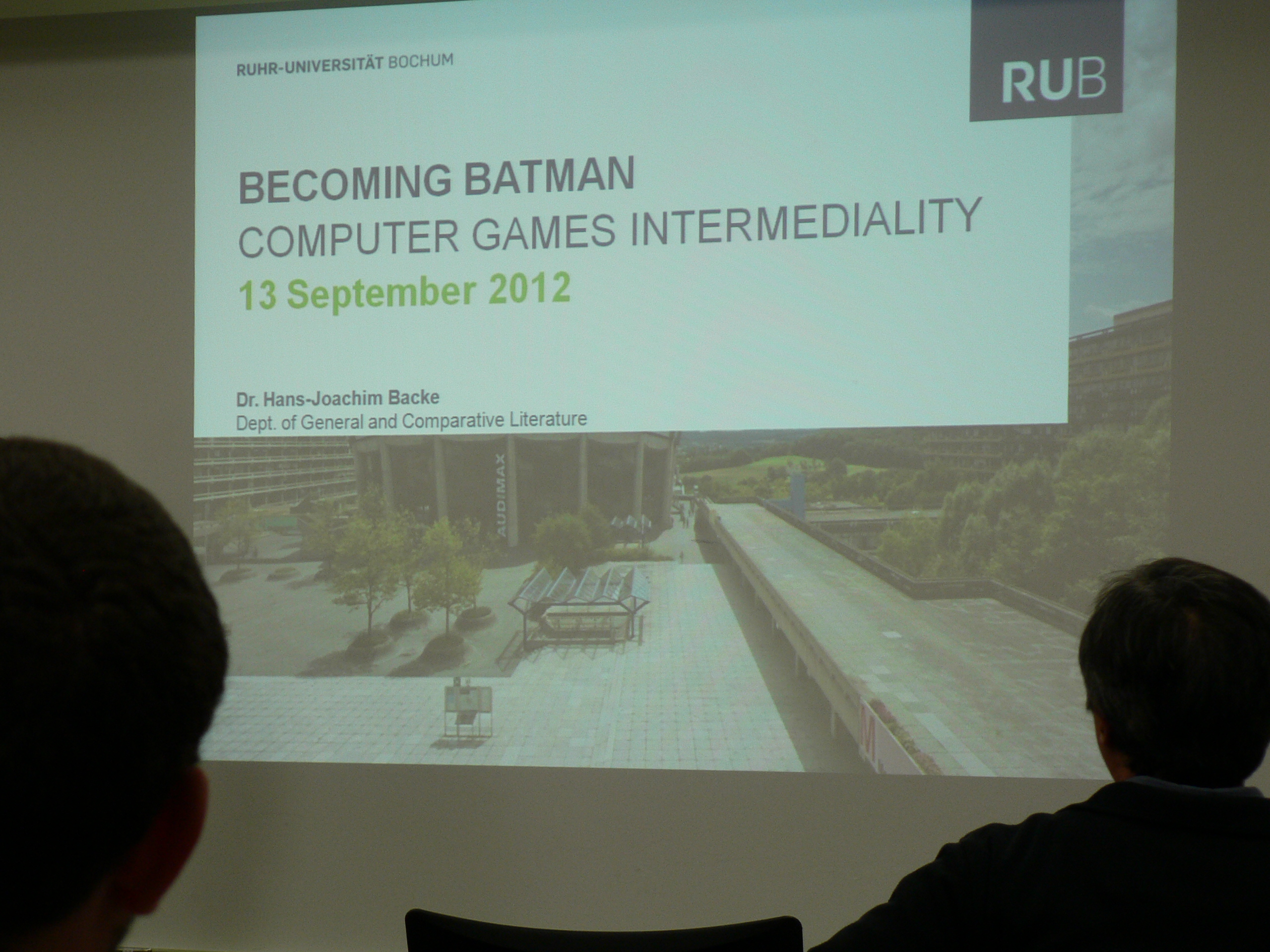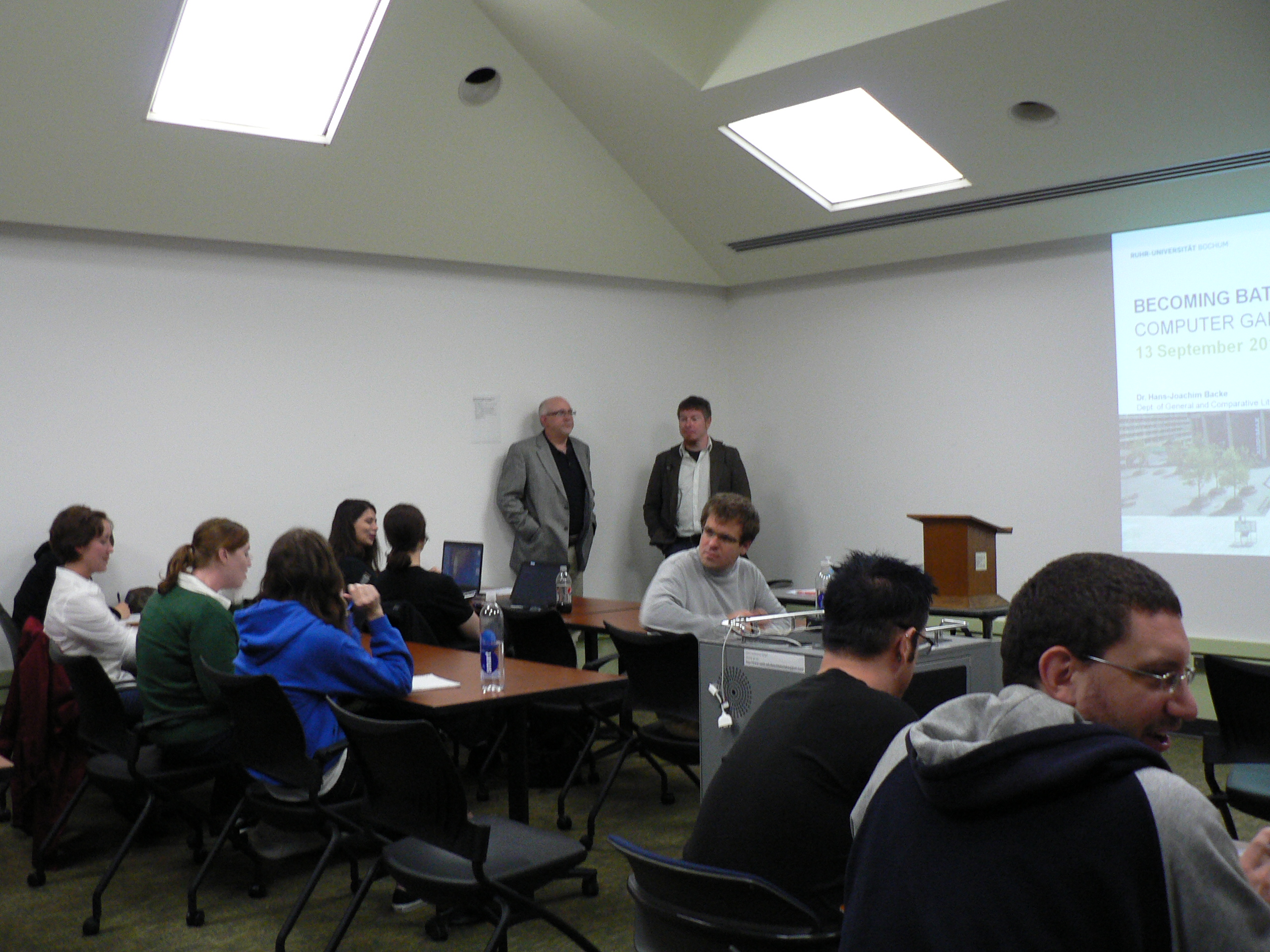By Michael Z. Newman
A colleague who studies the history of media and popular culture was  excited and a bit astonished recently to discover than an excellent book addressing a main topic of her research had been published in the 1990s. She wished she had read it while working on an essay she completed years ago. It may not be the only reason why that volume remains unknown to Americans, but the fact that its authors and publisher are German would seem like a pretty good explanation.
excited and a bit astonished recently to discover than an excellent book addressing a main topic of her research had been published in the 1990s. She wished she had read it while working on an essay she completed years ago. It may not be the only reason why that volume remains unknown to Americans, but the fact that its authors and publisher are German would seem like a pretty good explanation.
Your field may be different, but in film and television studies, the world of the American academic includes few scholars outside of North America and the UK. We read or at least know about all kinds of Continental theory (claim your ignorance of Gramsci, Habermas, or Foucault at your own risk) but are unlikely to know who’s who among contemporary Italian, German, or French media scholars, never mind those in Asia or Latin America. (There are some exceptions – some Danish and Dutch scholars in film, television, and video game studies come to mind.)
What if there are important ideas out there that we’re missing? This was one of my first thoughts on hearing that Hans-Joachim Backe of Ruhr-Universität Bochum was coming to give a talk at the Center for 21st Century Studies with the title “Becoming Batman: Computer Games, Comics and Concepts of Intermediality.” In Anglo-American film and television studies, as well as in the entertainment/media industries, “transmedia” has been a buzzword and object of scholarly attention in the past several years. Transmedia is usually short for transmedia storytelling: the expansion of narratives in media franchises such as Batman or Star Wars across multiple platforms including movies, TV, web video, comics, novels, and games. “Intermedia” was not a term I had noticed, though. As Backe described in his engaging presentation on September 13, intermediality has been a subject of much research and publication where he lives and teaches in Germany and elsewhere in Europe — more than a dozen books on the topic have appeared — particularly among literary scholars whose interests have turned to other media. Yet, in his words, it “furrows the brows of non-Europeans” to hear this term rather than the more familiar transmedia. The two ideas ostensibly do not have much to do with each other conceptually, and yet I kept wondering during Backe’s talk if it might not be productive to consider them side by side and see what each one reveals about the other.
Intermediality is a way of understanding the relations between two media, such as writing and images, or the transgression of boundaries between them. In some ways the term is like intertextuality, which can refer to the reference one text makes to another (overtly or not). Perhaps intermediality includes the reference one medium makes to another; not having read any of the literature on the subject I’m reluctant to use an authoritative voice here. (A quick Amazon search reveals that a number of books by European scholars have been published in English on intermediality, so language isn’t an obstacle if Anglophone scholars want to know more.) I was reminded as I listened to these ideas of the famous dictum of Marshall McLuhan that “the content of any medium is another medium.” Movies record plays, television transmits movies, YouTube is television on the internet.

Backe was hardly proposing that intermediality helps explain the same things as transmedia, and was eager to distinguish its distinct meaning and purpose. More importantly, he wanted to push back and offer a way of thinking of the relations between media different from intermediality. In his main example, he offered ways of understanding the relations of two media that have much in common, and in which specific narratives often move back and forth from medium to medium. Comic books and video games are often adapted from one to the other and share many thematic, narrative, and iconographic elements. They offer an nice set of specific texts and franchises (e.g., Resident Evil) to test a theory. Backe’s alternative to the concept of intermediality is transcreation, a term meant to capture the dynamics of moving from game to comic or comic to game.
In the most exciting and complex portion of his presentation, Backe presented a spectrum of relations between a comic and a video game, on which he plotted nine types of transcreation, from the simple adaptation of a print comic to an interactive electronic game to the appropriation of the form of comics in the form of games – in this regard, Backe described “systemic similarities between games and comics.” This discussion was very well illustrated with video game screenshots and I hope Backe will publish this material in a format that allows for the richness of his visual examples, the better to appreciate the finer points of the theory. Transcreation seems to be an apt term for capturing the many detailed ways in which one medium incorporates another without simply, to use McLuhan’s aphoristic but vague vocabulary, taking its content.
What might happen if we tried to put scholarship on intermediality or transcreation into dialog with that on transmedia storytelling? There are some revealing differences between these areas of research, but as far as I can tell they arise from a difference between a conception of media studies that is closer to literary studies than any other field, in which textual study is most central, and a conception of media studies as a form of cultural studies. What matters in this distinction has little to do with properties of literary, visual, cinematic, televisual, or ludological texts – or theories accounting for these properties. Rather, it has to do with the abiding primacy of textual study in certain scholarly traditions. Both intermediality and transcreation appear to be theories of texts and textual systems. By contrast, in cultural studies, the media text as cultural artifact is generally understood to be one point in a circuit of meaning and social relations that also includes the production and reception of media within a socio-historical context.
Scholarly interest in transmedia storytelling places the narrative at a nexus of social and economic relations among media industries and audiences (or fans), and may not be particularly invested in any theory of the text as an artifact in a given medium. Indeed, as Backe implied, it might assume that the same kinds of stories can be told in different media and that the narrative continuities matter as much as the media-specific differences. Perhaps more importantly, though, scholars of transmedia might not be invested in theorizing the medium, preferring instead to look at other aspects of the media practices they consider. They see transmedia not only as a feature of media texts, but just as importantly as an industrial strategy of media companies eager to commercially exploit their franchised products in multiple iterations, and as a way in which audiences experience narratives across multiple formats. The characteristics of media in relation to one another might be worth considering depending on one’s research questions, but understanding these characteristics as such isn’t likely to drive the inquiry.
One of the challenges of doing media studies today is accounting for the multiplicity of forms and experiences in a world characterized by media glut, by expanded, overwhelming options, by forms and genres to suit practically every conceivable audience niche and technology. We surely need to appreciate, as Backe’s work does, how specific media reference and reproduce each other’s qualities, the better to understand the meaning and value of the myriad forms of image, sound, and narrative we encounter in everyday life.
[Michael Z. Newman is an Assistant Professor in the Department of Journalism, Advertising, and Media Studies at UWM, and was a C21 fellow in 2011-2012. He is the author of Indie: An American Film Culture and co-author of Legitimating Television: Media Convergence and Cultural Status. He is working on a book about early video game history.]



